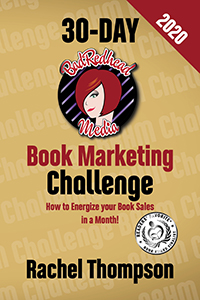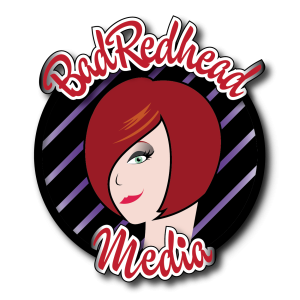5 Memoir Writing Exercises To Help You Right Now
Stuck in that, “Now what?” phase in writing your memoir? Let’s move you along.
“Memoir is about something you know after something you’ve been through,” says Marion Roach Smith, author of The Memoir Project.
Many memoir writers, once they’ve given themselves permission to write their story, get stuck after writing that terrible first draft.
First drafts are encouraging. We’ve finished something, which is amazing. We deserve to celebrate! Take a bit of time off from your writing. A week, a month, whatever works for you. Write something else, blog, doodle. Eat a cookie. Big fan of cookies.
Then, get back to it.
What do you need to do? Faced with a wall of text, many writers end up overwhelmed with how to outline or structure this behemoth, a seemingly impossible task. Staring at the screen, we often wonder: now what?
Here are several ways I’ve used in my own work, or when teaching memoir-writing workshop participants, or clients to power through this phase:
1. State Your Mission
What is the main reason you’re writing this story? As I mention in my article about writing a memoir, 5 Top Tips For Writing Memoir That Work For Any Writer Struggling with how to tell your story? Read on! medium.com, readers want to know what the message is before diving in. WIIFM = What’s In It For Me? As writers are often avid readers, this concept need not be all that foreign for us.
Readers have limited time and a plethora of books to read, so make it clear up front what this book is about whether that’s in the subtitle, intro, front and/or back cover, catalog page on Amazon and other retailers, social media content, website copy, etc.*
*My only caution here with regard to creating your book cover is attempting to tell the entire story there. Too many visual components on your book cover make it literal, hard to differentiate as to what your main message is, and difficult to see in a thumbprint-size view.
When I was a sales rep for Big Pharma, we needed to nail down our ‘30-second pitch,’ aka our ‘elevator pitch,’ meaning, if we only had enough time with a physician for an elevator ride, could we ‘sell’ (aka, convince them to write) our drug in that short period of time?
Same concept applies here. Figure out your mission statement or in publishing parlance, your logline. You won’t likely be in front of readers face-to-face, given the state of the world right now, so figure out your logline or pitch that will represent your work:
In brief (no pun intended), a logline is a one- or two-sentence summary of your book’s plot. If someone asked you, “What’s your book about?” and you only had a few seconds to describe it, that would be your logline (also known as a pitch). (Source: PublishedToDeath)
2. Character, Situation, Lesson/Message
Let’s break down these three parts:
Character
Who is the main character of your memoir? Obviously, you. Hopefully, you.
Well, we would think it would be obvious, however, in that messy first draft, we often find we’re writing more about others and how they’ve affected our lives. This is where blurred lines start to build, and where we need to create boundaries.
Memoir is about our own lives and what we’ve experienced. Our lived truths. Sharing what we’ve learned.
Take a look at your draft objectively and ask yourself:
- Will readers see me in here?
- Is my focus on my situation or someone else’s? (more on that below)
- Am I holding back out of fear of what others will think/say?
If you’re worried about what others will think or say about your work, read this: How To Crush Your Writing Fears Right NowWorried about what people will say? That you’re not good enough? Where to start? Read on…medium.com
Situation
What is the main situation you’re sharing in your memoir? Many new writers want to cram in their entire world of experiences into this one book when in actuality, there’s plenty of time and more books to write (we hope).
Take a look at your draft and see how many different situations you’re covering. It’s okay to have more than just one if there’s a theme. For example, in my BROKEN series of three books, I discuss being a childhood sexual abuse survivor throughout all three memoirs using essays and poetry, I address different situations, and how they affected my life at different times.
I’ve written three books on this topic because even though it’s heavy, the stories are ultimately uplifting stuff. This helped me build an avid readership and connect with other CSA survivors also. From a marketing perspective, leave your readers wanting more, thus paving the way for your next book.
In teaching creative nonfiction workshops, I discovered many writers want to share their stories, yet lack a theme. Or they know the theme, yet bounce from situation to situation, not utilizing their theme as part of their structure.
As you review your draft and total your situations, analyze each one and determine if the situations tie directly back to you, the main character, as well as the various situations that fit your theme. If not, you have a choice: rewrite the situations to fit your theme, kill your darlings, or, (my favorite), save them for a future book, blog, or social media content.
The Lesson/Message
This doesn’t have to be some false positivity BS. As a sexual abuse survivor, I’m the last person to tell you there’s something positive or uplifting about someone taking my innocence away at 11 years old.
However. Every memoir has a lesson or message of some sort. What’s the lesson/message you want to share with people? Determine that and then write with determination and intent.
My message is we’re not alone. It’s okay to talk about it. We did nothing wrong.
It doesn’t have to be preachy or spelled out in giant sparkly gold letters for readers. Yet, you need to know what the lesson/message is, or you’ll be utterly lost as you continue past your first draft.
- What do you want people to know when they close your book?
- What was in it for them? Did you achieve that goal?
- Did you help?
- Teach?
- Make them think?
Think about the memoirs, shows, or movies you’ve watched that made an impression on you. What stands out? Answer those questions above, and list the entertainment that made that impression.
What’s the theme? What attracted you to those stories?
Caveat: I’m not of the school where trauma survivors must share some kind of “lesson” from our trauma. We’re allowed to share our stories, period, end, dot. There’s dignity and courage in mining our lived truths.
3. Write With Emotion
Show, don’t tell. We hear this a lot. The two biggest obstacles I’ve found when writing a memoir are not writing chronologically (e.g., like a diary), and telling people how we feel.
In his most oft-repeated quote, Chekhov said, “Don’t tell me the moon is shining. Show me the glint of light on broken glass.”
Describe Emotions
How to avoid telling our emotions (or those we interact with, within our memoir)? Several ways. The easiest is to engage our five senses (some say six). Let’s discuss fear.
- What does fear smell like?
- Taste like?
- Look like?
- Sound?
- How does fear feel in your body?
Write down those descriptions and put that into your memoir!
Use Dialogue
Instead of recalling a conversation where you felt afraid, use dialogue to dig into those emotional truths.
This is also a way for the reader to get to know the other people in your story. Do they have an accent? Are they loud or soft-spoken? How did you feel interacting with them — e.g., what is your emotional truth when in their presence?
Dialogue also helps move the story along. If there’s no dialogue, your memoir will feel flat and monotone. Dialogue gives it life.
Use Action
If you feel you’ve exhausted the above, add in some action — from walking across a room to pick up a drink to an ambulance ride — as long as it’s true. Remember, creative nonfiction and memoir are still truth-based forms of writing.
Think of using action as writing scenes, if you will. Use vivid imagery and strong details that help the reader picture your experiences.
4. Every Word Counts
This is true of any type of book, yet especially of memoir. Toss out that purple prose and those ten pages of exposition. It’s okay if your memoir is only 100 pages (most memoirs are somewhere between 60,000 to 80,000 words). Or perhaps you’re writing a personal essay. Or a creative nonfiction short story.
Memoir is about quality, not quantity.
A memoir writer still must pay attention to literary devices. This format is not a day-by-day diary. It’s also not an autobiography from birth to death. Tip: Remove the repetitive fillers, e.g., just, seem, so, really, even, truly, very, etc.
Hire a great editor. An editor will be able to help you find structure or create an outline because they are objective about your work. You are not. Neither is your Aunt Sally who used to teach high school English.
5. A Satisfying Conclusion (Even If Open-Ended)
Here’s where an outline is supremely helpful. Where is this memoir going to end? Perhaps at this point, you realize you can’t fit it all into one book. Where do you plan the cut-off point?
In working with my workshop participants, one writer shared her experience with depression after the death of her beloved twin sister. The theme of the book is grief. The characters are her and her sister, and how she dealt with this death, however, she was stuck on where and how to end it.
We worked through it and she decided to end it right after the funeral, which at first she thought was too abrupt. Once she reworked the memoir leading up to that point, it became a satisfying, if open-ended, conclusion, allowing her to start work on the next book.
Look at your draft. You need a good beginning, middle, and end, like any great story. In this same example, the three-act structure is:
- She experienced grief
- She learned about it
- She grew in ways she didn’t realize.
In Summary
These are tips that have worked for me. There are many experts who do nothing but teach memoir writing — learn from them! I encourage you to read Marion Roach Smith, a giant in this genre. She’s amazing.
If you choose to write essays and poetry, as I have for my BROKEN series, that three-act delineation may not be as clear cut, yet the conclusion is still open-ended, which is the beauty of creative nonfiction and what attracts me to writing in this genre.
Whether you’re struggling with your third or thirtieth draft, I hope these techniques help give you insight into different ways to view your work. What helps you when writing memoir? Please share!
Also: I’ve been hosting #BookMarketingChat on my @BadRedheadMedia Twitter timeline for many years now. What’s NEW? Adding a weekly #BookMarketingChat Twitter Spaces! Super easy to join: just click on my Twitter avatar at 11 am pst/2 pm est every Wednesday and listen in.


is social audio, meaning no video; and no requirement to speak unless you want to. Once you join (mobile app is easier at this point), you are in default listener mode and you need to request to speak.
Have you signed up for my newsletter yet?
Get On That, Would Ya?

Thank you for these very useful tips. I am almost finished my first draft of a biography of my sister and your guidance has helped me tremendously to move on to the editing stage.
Thank you for reading and commenting, Naomi! Best of luck with your book xx